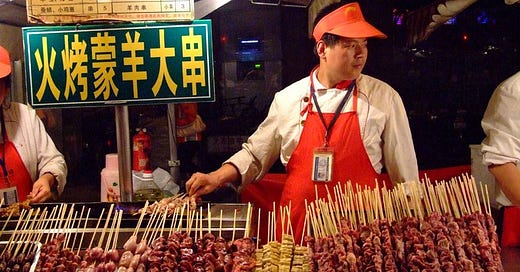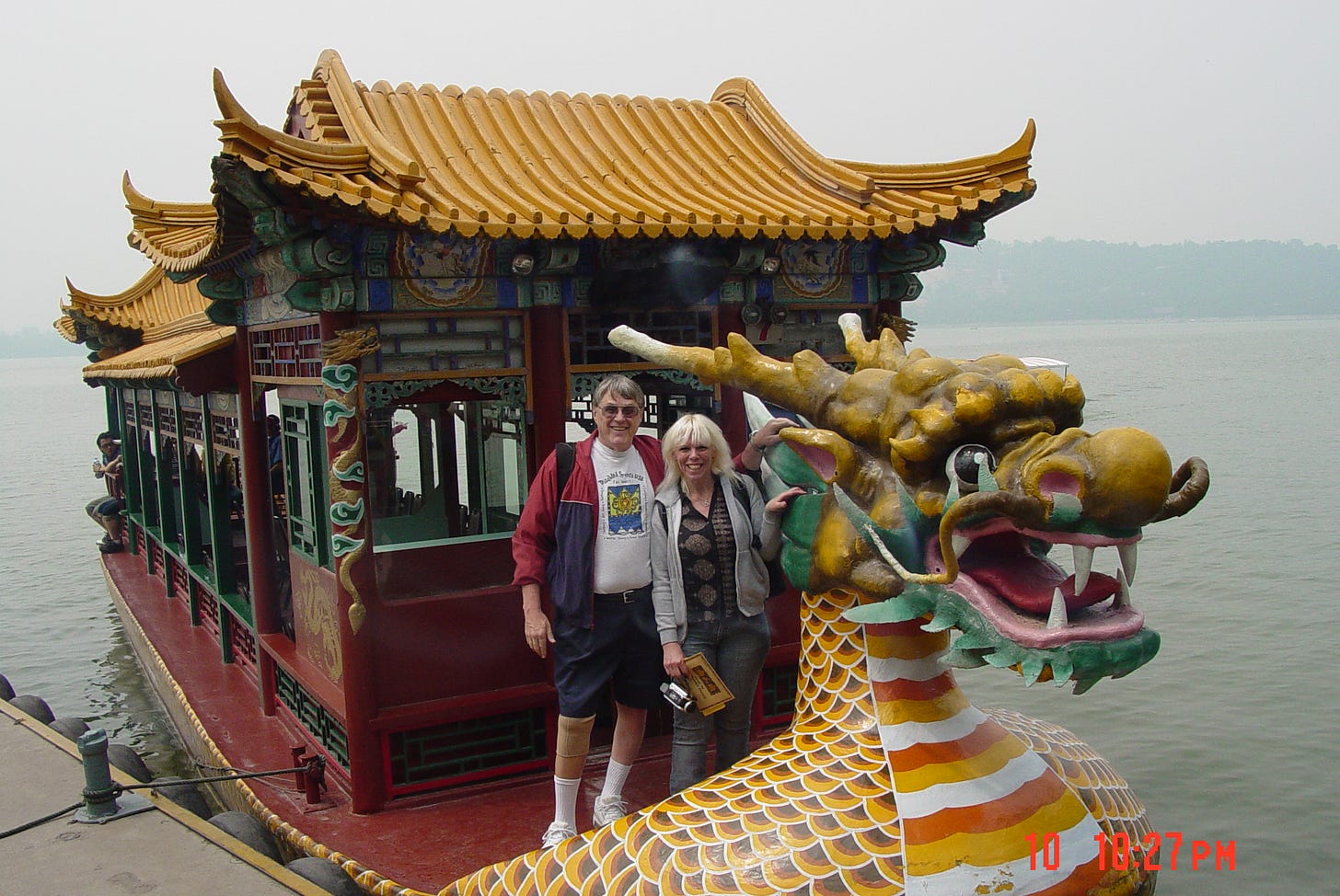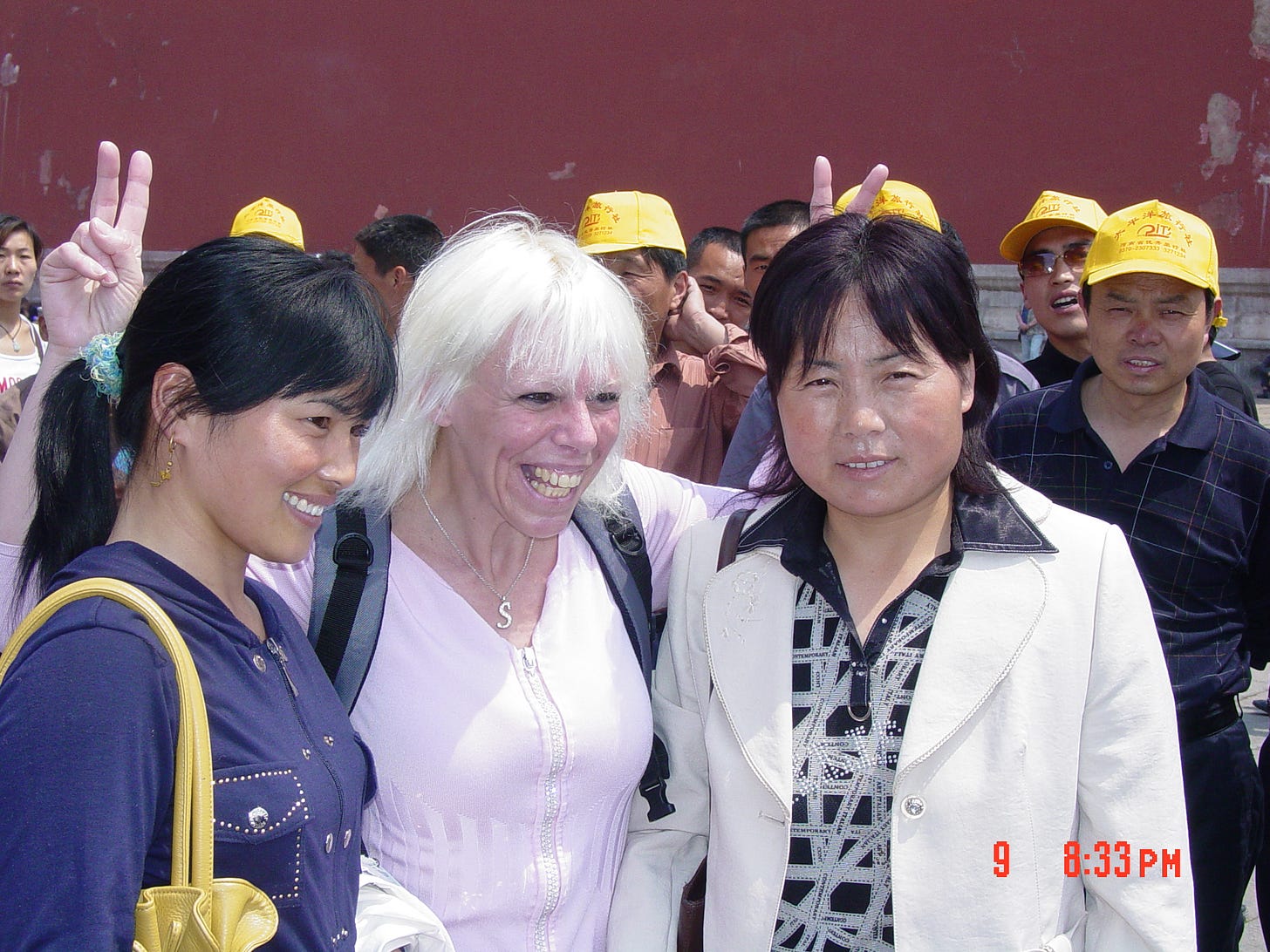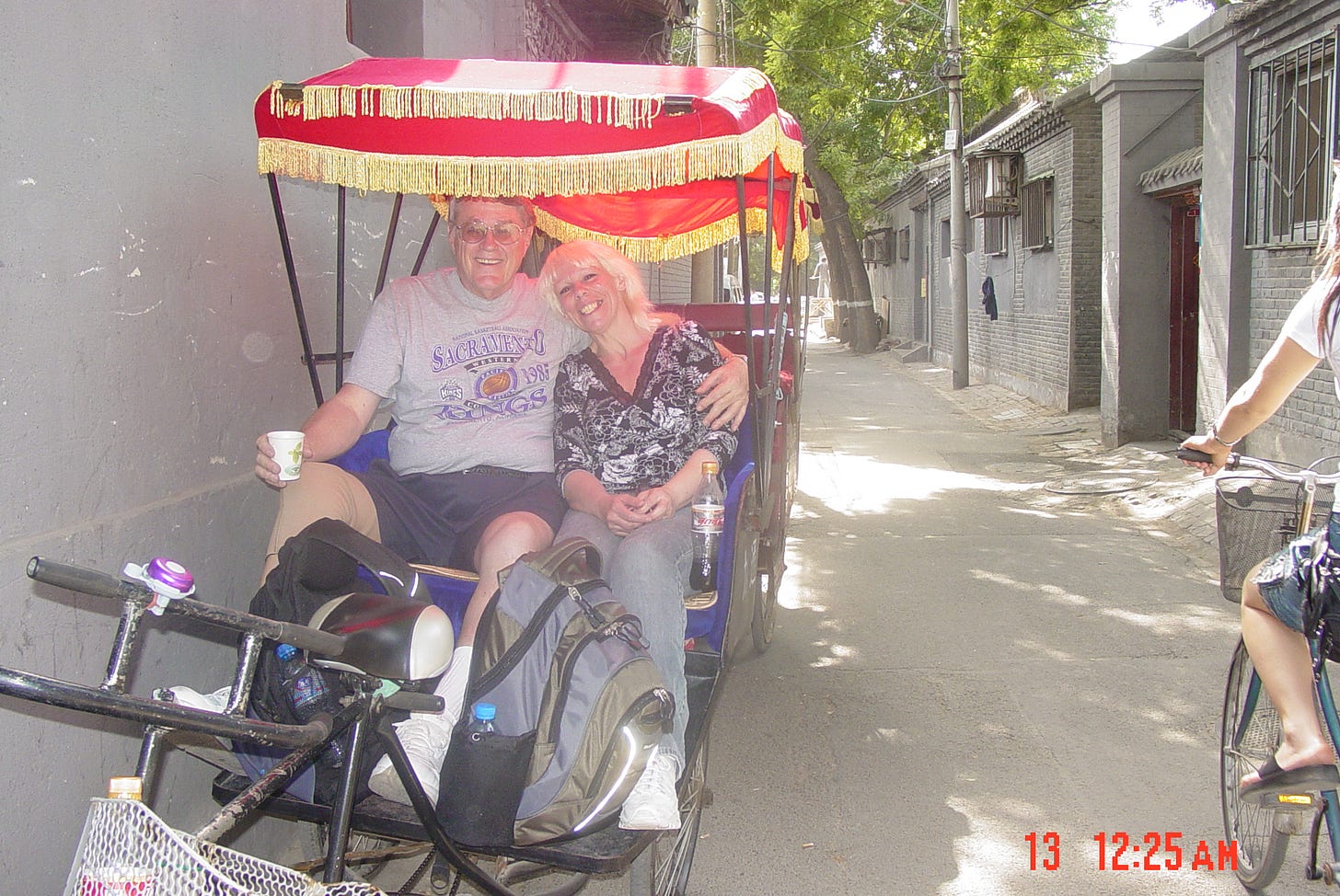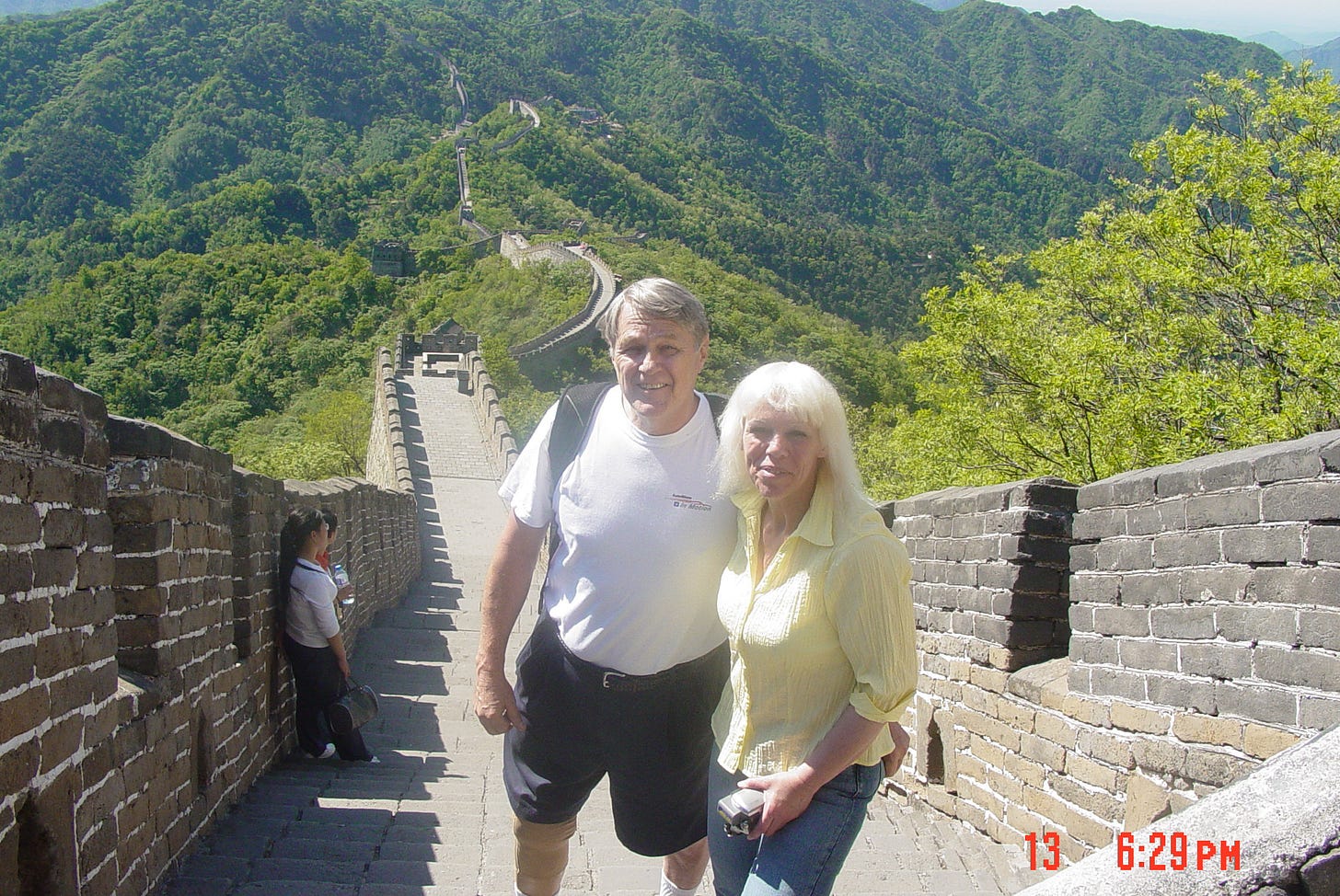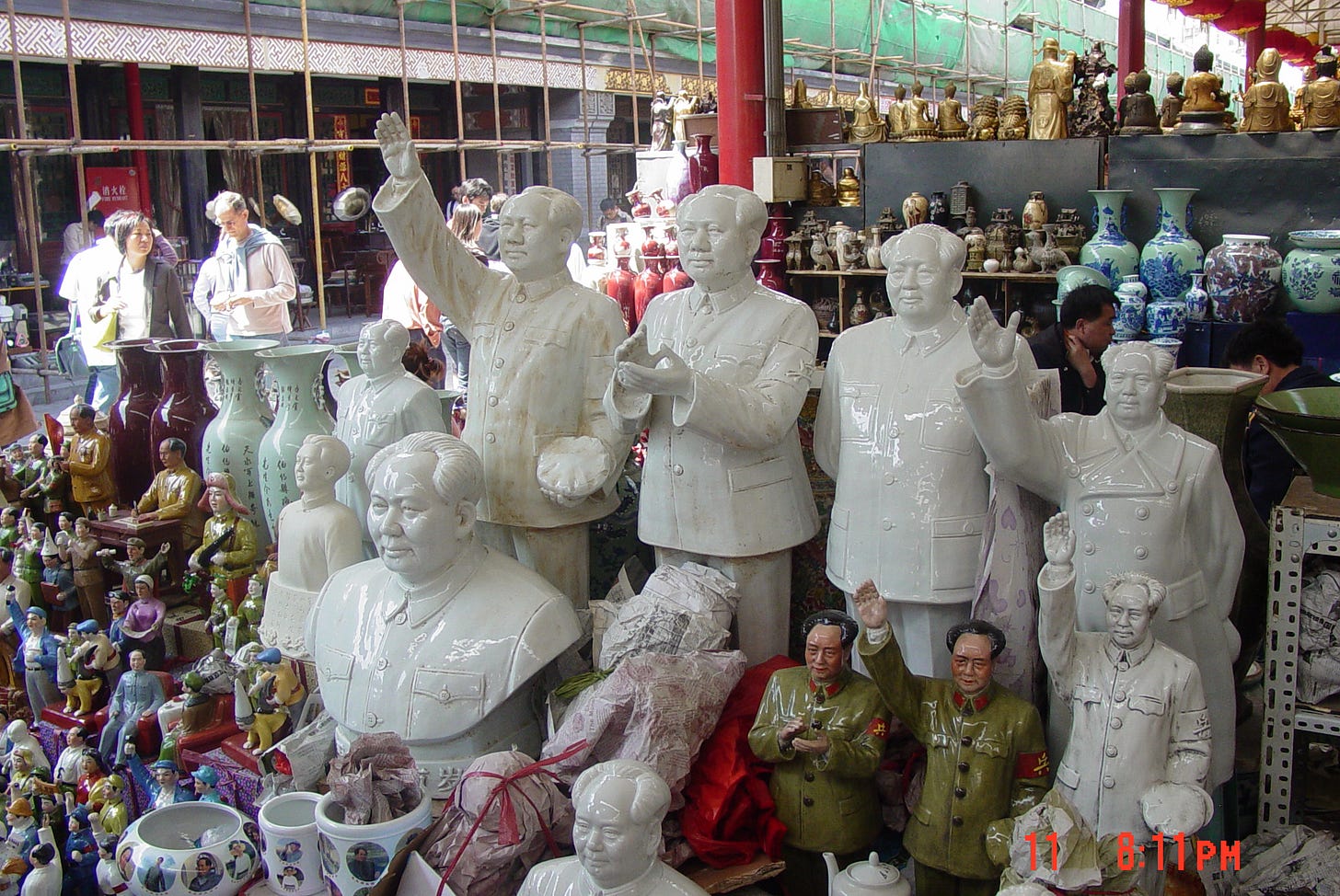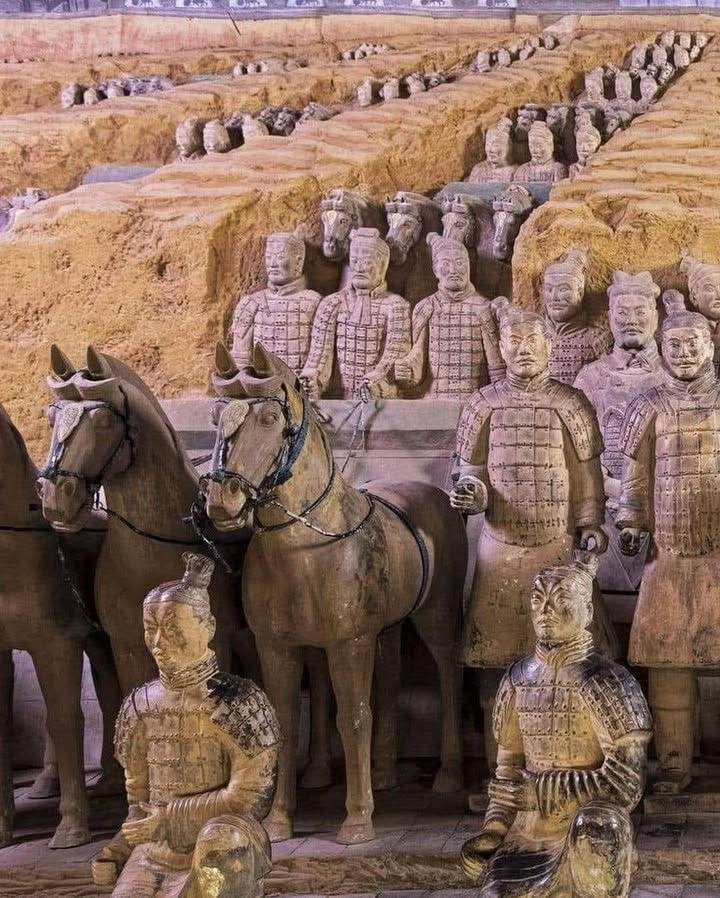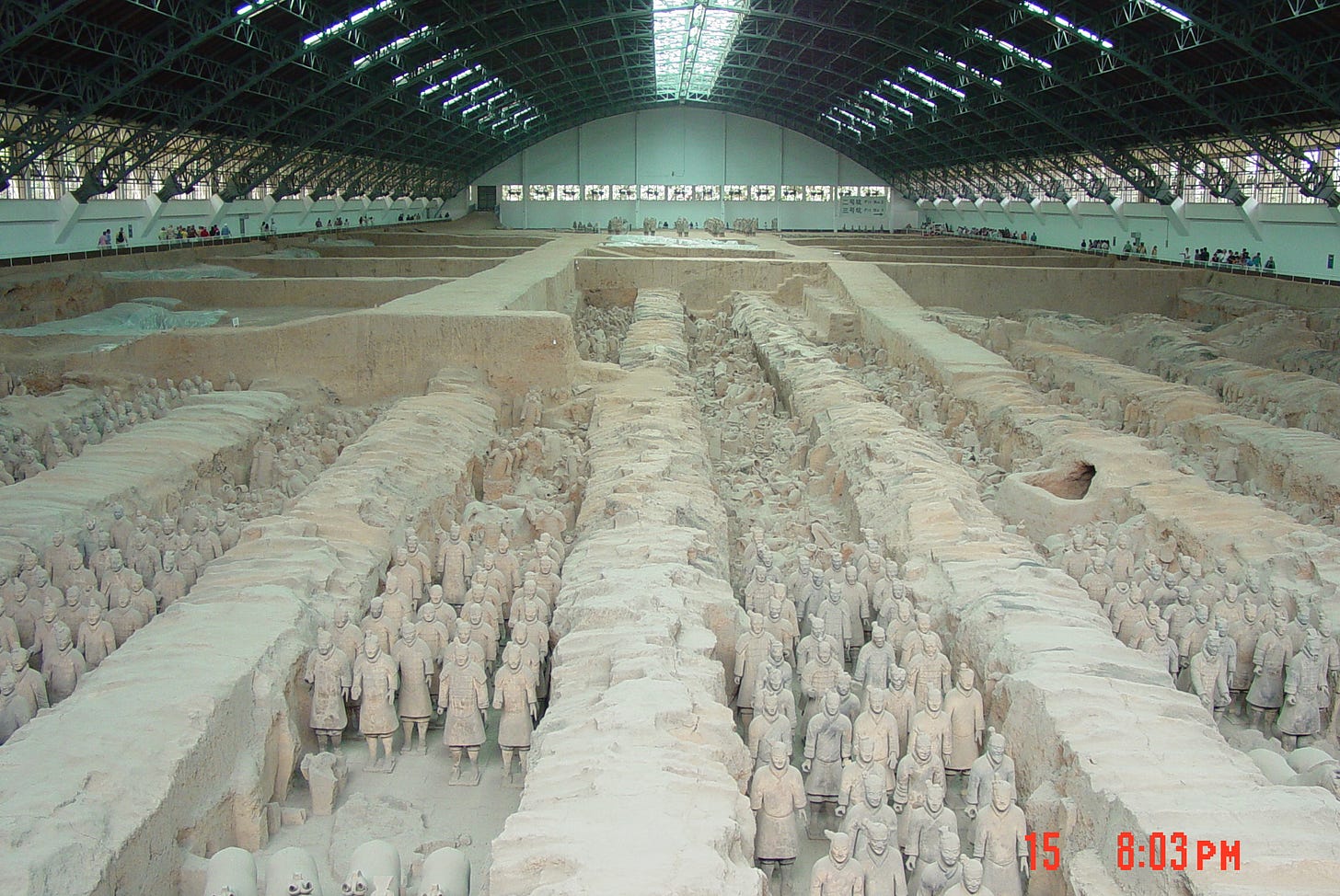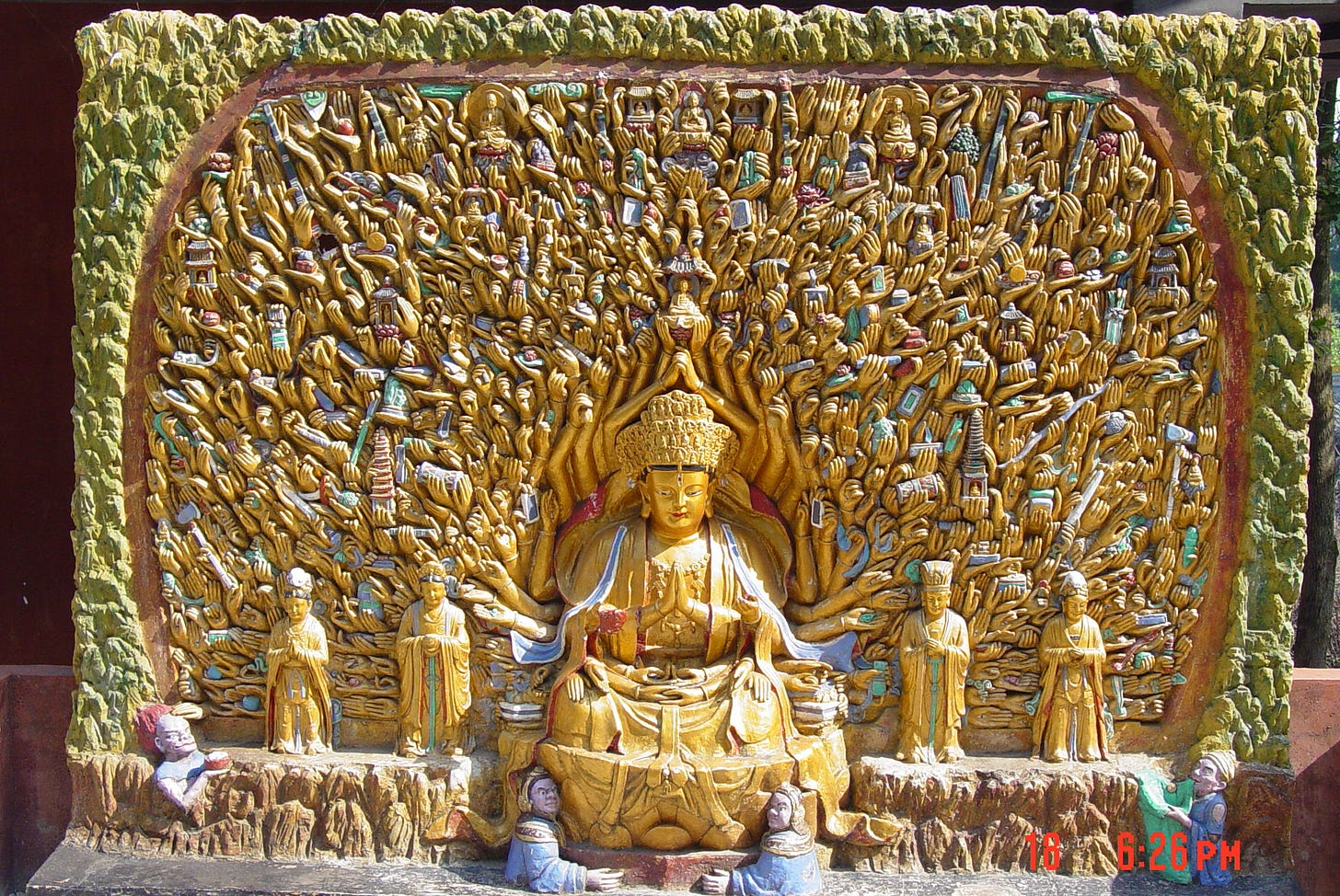We are in Costa Rica for two weeks, So I am posting two stories ( one this week and one the next) about a trip we took nearly two decades ago.
We flew into Beijing. It was May 2007. We didn't book any tours as I had extensively researched the country, decided where we would go and booked trains or planes as needed. We got a taxi at the airport and made sure he turned on his meter. Being the gregarious guy I am, I decided to try to communicate with our driver on the way out of the airport. So, I pointed to myself and said, "Doug". Then I pointed to Sheri in the back seat and said her name. I immediately pointed to our driver trying to get him to say his name. On the third try he pointed at the information card on display. It contained his picture and a bunch of Chinese writing.
Sheri asked, "what did he say"? I replied' "his name is Bill!" From then on all taxi drivers in China were Bill to us. The one who drove too fast was "Parnelli Bill". The one who played his radio too loud was "Rockin' Bill". In Beijing we mostly used the subway so we didn't use taxis often. But we had two problems with taxis which I explain a bit further on.
Rather than plug in music though out this story, I have chosen not to do so with a few exceptions. I decided to insert pictures we took instead. But, ignore the time stamps. I actually didn't know it was activated and it is incorrect for China.
Sheri was worried about the food. So she had packed some instant oatmeal and a few snacks. What she didn't know was that I had booked a western hotel (Marriott, I think) which had an American breakfast buffet and restaurant. She doesn't eat breakfast, so I would load up my backpack with food she could eat later. The first night, being the adventurous type, we walked to a street market and I tried a number of the item being sold. For me eating the local food was part of the fun and it wasn't long before Sheri joined in.
While in Beijing we visited all the tourist spots like The Forbidden City, The Summer Palace, The Lama Palace, The Temple of the Sun, The Temple of The Moon, The Drum Tower, The Bird Market and a few more places. I was wearing a brand new leg that I picked up the day before we left. It didn't fit right and I walked all over China with open and bleeding blisters on my stump. Locals would gather round and squat down when I took my leg off. I would hand it to the kids to pass around. Then I would receive a round of applause when I demonstrated how it went on and then stood up to take a few steps. This shot at the Summer Palace.
The first morning we rode the subway to Tiananmen Square and the Forbidden City. Walking across the square toward the gates of the Forbidden City we encountered a good number of Asian tour groups who were all wearing the same color baseball caps and following single file behind a guide with a flag of the same color. For fun, I put us in the back of a line as a group wearing yellow hats passed. When the tourists in the line turned and saw us, I would hush them pretending that the guide wouldn't notice. When she finally spotted us we ended up posing for pictures with them. The leg amputee guy in shorts and the blond lady were both anomalies to them.
One "tour" that stands out was when we took a rickshaw ride through the hutongs: they are a type of narrow street or alley commonly associated with northern Chinese cities, especially Beijing. They are formed by lines of siheyuan, traditional courtyard residences. We actually went all through one of those houses. Many neighborhoods were formed by joining one siheyuan to another to form a hutong, and then joining one hutong to another. The word hutong is also used to refer to such neighborhoods.
Since the mid-20th century, many Beijing hutongs were demolished to make way for new roads and buildings. More recently, however, many hutongs have been designated as protected, in an attempt to preserve this aspect of Chinese cultural history. Hutongs were first established in the Yuan dynasty (1279–1368).
We, of course, wanted to walk the Great Wall. We found a taxi driver who would drive us the 5o miles to Badaling, wait for us and drive us back. He asked for $50. On the way back I asked him to stop somewhere we could eat. He found a small dumpling place in a country town. We had a feast and paid very low local prices. Cheap!! We gladly paid him double when we got back.
One night we went to a dinner and folk music show. The traditional food was good and the show was fantastic. We saw experts playing traditional Chinese instruments in costume and dance performances. Stunning!
One day we took a cab to the Dirt Market and wandered around. We bought a few things to take home. As we were leaving we got in a cab and only with insistence on my part did he turn on the meter. I always sat in the front seat and I watched as the meter moved way too fast when compared to the meter in the cab we took to get there. So, I had the driver pull over and we got out and, despite his demands, simply walked away without paying.
On our last night we stayed in a "typical Chinese hotel". Two memorable things happened there. One was when we bought a whole rotisserie chicken from a street vendor and took it back to our room. It was good until we got through enough of it to open the stomach cavity which still contained the innards. That was repulsive and out it went.
The second was when we had the hotel call us a taxi to take us to the train station. On arrival the driver looked at our luggage and began arguing with hotel management over it. He basically did not want to put it in his trunk and I suspect he was trying to get a higher fare. After about ten minutes of angry shouting (we couldn't understand a word), I got our bags and we started to walk away. The hotel lady asked me, in English, why I didn't want the taxi. I told her, "I don't like his attitude". We walked about 5 blocks to a busy street and hailed a cab.
From Beijing we took an overnight train to Xian to see the Terracata Army. Sheri was wary of that train ride to say the least. She had read stories of people being robbed on trains. That is until we were shown into our own cabin with a locking door, bunk beds, a table and chair and our own bathroom. I had booked a first class room. Sheri sat up all night looking out the window as Chinese towns and countryside went by. I, on the other hand, got some shuteye. Being an early riser, I was off to the dining car for coffee. What I found was the cook and wait staff asleep in the booths. I returned to our cabin bitching about not finding any coffee and Sheri said, "in china they drink tea". To which I replied, "I'd give all the tea in China for a cup of coffee".
In Xian we saw the Terracata Army. The Terracotta Army is a collection of terracotta sculptures depicting the armies of Qin Shi Huang, the first emperor of China. It is a form of funerary art buried with the emperor in 210–209 BCE with the purpose of protecting him in his afterlife.
They were discovered in 1974 by local farmers. The figures, dating back 2,200 years, vary in height according to their rank, the tallest being the generals. The figures include warriors (each with a different facial expression), chariots and horses. Estimates from 2007 were that the three pits containing the Terracotta Army hold more than 8,000 soldiers, 130 chariots with 520 horses, and 150 cavalry horses, the majority of which remain in situ in the pits near Qin Shi Huang's mausoleum. The tomb belongs to the first Chinese emperor, Qin Shi Huang, and it is believed that this army guarded his tomb. Other, non-military terracotta figures have since been found in other pits, including those of officials, acrobats, strongmen, and musicians.
My fondest memory, besides the warriors, was when we were walking in the Muslim Quarter and found a restaurant with the words, "English menu" painted on the window. Delighted, we went in only to find that the menu was a literal translation into English and listed things like "red digs up the hunchback palm" and "fried steam". We had no idea. So, I lead our waitress over to a table where 8 locals were eating. I pointed to four dishes on their table one at a time and held up 1 finger to indicate we wanted one of those. It was a great meal. Our waitress stood next to our table the whole time. Talk about service!
We took this picture in a park in Xian.
From Xian we flew to Chongqing the city where tourists take a multiday boat trip on the Yantzee River. We passed on that and took a local bus to Dazu. The hotel there was a rundown dirty mess but the meal we had in it was huge, very tasty and inexpensive. We were there to visit the rock carvings the next morning.
The Dazu Rock Carvings are a series of Chinese religious sculptures and carvings that were designated a UNESCO World Heritage Site in 1999. The carvings date back as far as the 7th century AD, depicting and influenced by Buddhist, Confucian and Taoist beliefs. The ones we visited were rock reliefs carved into the open rock faces. There were many. Here are pictures of a few. The most famous is the Thousand Handed Badhisattva.
After returning to Chongqing we flew south to Lhasa, Tibet. More about that in my next blog.
I am 81 now and I have been many places, seen and done many things. I have enjoyed most genres of music. If you are a veteran, let’s share stories. If you love music, tell me about some of your favorites. If you are a traveler, share where you have been. If you are an adventurer, I want to know about your adventures. If you are part of a younger generation, I want you to know about “the good old days”.
I have learned adaptive sports and I have taught them to people all over our great nation and overseas.I have guided and lead expeditions down raging rivers. I was an army brat and a soldier.
I publish weekly on Friday. I want you to be transported to a different time and to enjoy what you read. I want to tell you about my life and my love of music. I want music that evokes memories. I want you to escape today's worries for a few minutes.

